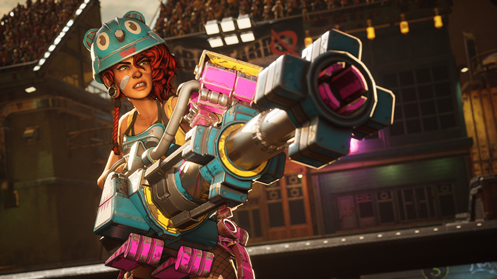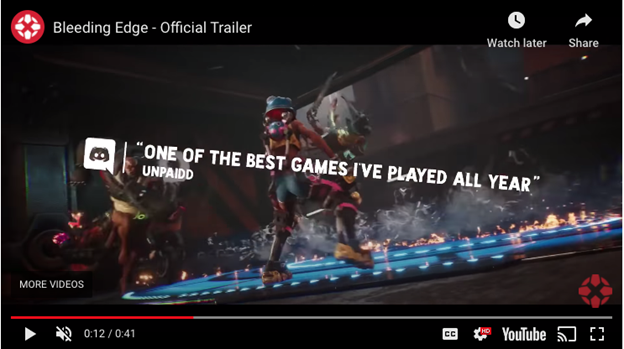Cost was once the most important factor in determining whether or not a video game was being added to my collection. Cost, combined with the reviews and the social stigma that I should be a part of the larger pop culture conversation, reigned king in my decision to drop, say, $35 dollars on OBLIVION in 2007 despite it all the way not being the kind of game I enjoy at all. I know myself. And I know I shouldn’t buy games that aren’t for me. But here’s the thing? A game that retailed at $60 plus tax being offered for only $35 flat because my friend was done with it? Cost was king.
In 2020, cost is less of an object for me when it comes to games. The value of things more generally grows out of whack when you consider CALL OF DUTY: WARZONE is free and the biggest game on the planet right now. But to a larger degree personally, I simply don’t purchase many triple-A titles during their release week anymore, and it’s largely because so many games are available at heavily discounted rates or, better yet, for free—the canon of releases I never got a chance to play because of cost colliding with Microsoft’s Game Pass has been a real awakening for me the last several months, but even so as an adult making close to adult-money, I dropped $60 dollars on ANIMAL CROSSING: NEW HORIZONS and felt good about the choice.

The face you give a character when you know the game is gonna be grimace-worthy
Yet even if price matters less to me, I can’t help but still assess a cost benefit analysis to gaming; looking at art in terms of dollar signs is problematic on multiple levels, but video games in particular tend to be a financial investment for people (it’s perhaps why reviews hold so much more weight in the world of video games than elsewhere) and, in a world where FORTNITE and APEX LEGENDS are blockbuster titles available for free, already in the green as it were, it’s worth considering. ANIMAL CROSSING: NEW HORIZONS has brought my girlfriend and already hundreds of hours of enjoyment, making that $60 easily justifiable. All of this to say: even though I was playing it for free through Game Pass, knowing that BLEEDING EDGE cost 30 American dollars was making me lose my mind.
BLEEDING EDGE, if you don’t know—which it’s very possible you don’t—is an online-only BORDERLANDS-ish third-person team brawler that was meant to be Microsoft’s big headline attraction on Game Pass this spring. Released on March 24th to little fanfare, it had the potential to be a quarantine cornerstone for an audience that wasn’t interested in beautifying their island home—that it currently isn’t likely means that a few people at Ninja Theory or Microsoft are jobless during a pandemic. With widespread mediocre-to-bad reviews, BLEEDING EDGE has become a quickly-swept-away embarrassment—a newly released trailer for the game replaces pomp and circumstance pull-quotes with Tweets and Discord comments (five in total) from online ghosts with questionable taste. Some quick math for you: at the time of writing, the 24-hour estimated player peak is only 95, meaning that it’s possible 5% of the games active user base are featured in that commercial. Congrats to them!

That the username is “Unpaidd” is rich
BLEEDING EDGE isn’t atrocious. Like, you can play it, the mechanics are sloppy and the maps boring, but it’s sometimes cool to look at in that “wouldn’t it be cool if more things felt like MAD MAX” kind of way. While I’m sure the game is striving for a more technical, more nuanced play style, where learning to develop rhythm with the various fighters pays dividends, it’s hard not to look at the whole thing like a button-mashing mess. Fighters are broken down into three categories (Basic, Specials, and Supers) as to range diversity for team play, and while the powers and attacks themselves feel thought-out, the way they engage in high action moments is nauseating and slapdash.
As humdrum lazy as the whole package feels, and as nauseating as it was to play multiple games, I was ultimately more embarrassed by it than I was actually repulsed—it’s hard to manufacture this level of unenthusiasm, and even playing it the experience radiates with a surreal joylessness, the shell of a video game that exists for the sake of newness. Knowing that the marketing and presumed cultural cache that comes with being one of Microsoft’s flashy new titles meant that even a few people spent $30+ dollars on it is pretty infuriating, especially given the lack of actual substance. As embarrassing as the product itself is, it’s equally if not more embarrassing when you consider APEX LEGENDS has equally interesting character design and color with 100% more replay value for zero dollars. With only three game modes, it’s hard to really justify this package costing anything in the current market—that it’s the biggest blockbuster title Xbox Game Studios has published since GEARS 5 in November is a pretty big yikes! It’s easier to look at the cost of something being too much when it’s fundamentally bad—that’s as true now as it’s ever been—but even for free BLEEDING EDGE isn’t worth the time of the download.















Comments